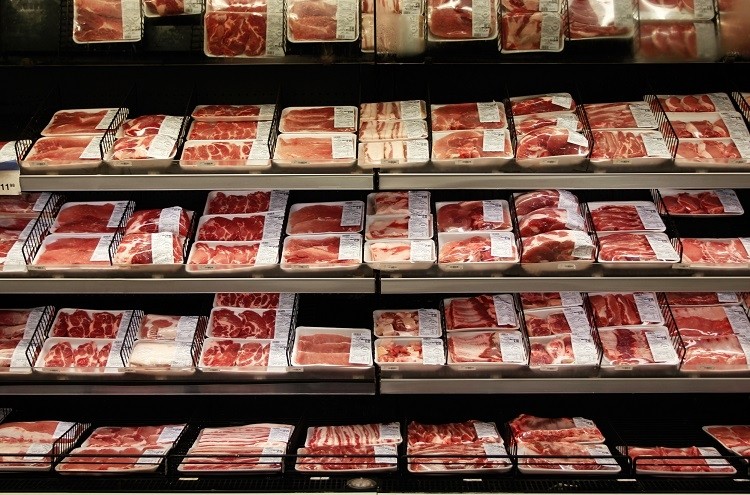Discover Fresh Cuts at Bagley Farms Meat Market Edwardsville IL for Your Following BBQ
Discover Fresh Cuts at Bagley Farms Meat Market Edwardsville IL for Your Following BBQ
Blog Article
Uncover the Art of the Butcher's Cut in a Modern Meat Market
In the ever-evolving landscape of contemporary meat markets, the butcher's cut has actually transcended its conventional origins, combining olden craftsmanship with modern methods. What really establishes the modern-day butcher apart is their capacity to build a much deeper connection between consumers and the origins of their meat.
Evolution of Butchery Strategies

The mid-20th century saw butchery methods even more fine-tuned by clinical understandings into muscular tissue biology and meat aging, boosting both tenderness and preference. Technologies like vacuum product packaging and refrigeration prolonged product shelf-life, enabling butchers to branch out offerings and boost quality control. This period additionally marked the surge of specialized tools, such as band saws and meat slicers, which boosted precision and efficiency in meat processing.
Electronic systems currently assist in tracking animal provenance and enhancing cuts to satisfy certain client preferences. Additionally, a revival in artisanal butchery has actually arised, mixing traditional skills with modern expertise to cater to customers looking for moral and lasting meat options.

Comprehending Meat Cuts

Understanding the intricacies of meat cuts is necessary for both butchers and customers seeking top quality and worth. For butchers, exact cuts show skill and respect for the craft, making sure marginal waste and optimal yield.
The key classifications of meat cuts consist of primal, sub-primal, and retail cuts. Primal cuts, such as the loin, rib, and chuck, are the huge areas originally divided from the carcass. Butchers then damage these down better into sub-primal cuts, prior to ultimately producing retail cuts offered to consumers, like ribeye or tenderloin. Each stage requires careful focus to physiological structure and muscular tissue structure.
Comprehending muscular tissue structure is critical; muscular tissues used a lot more frequently by the pet have a tendency to be harder and are best fit for slow cooking approaches, while less-used muscular tissues, like those located in the loin, are extra tender and perfect for cooking or roasting. Experience with these distinctions encourages customers to make More Bonuses enlightened selections, enhancing their culinary ventures.
Picking Quality Meat
Choosing the right meat includes more than simply selecting a visually appealing item from the display. The art of picking top quality meat requires a critical eye and expertise of certain attributes that indicate quality and quality.
Secondly, consider the marbling, which describes the white streaks of fat within the muscular tissue. Proper marbling is a crucial indication of inflammation and taste, as it thaws during cooking, boosting the meat's juiciness. Keep in mind, greater marbling usually correlates with premium high quality cuts, such as USDA Prime.
Structure is one more crucial element; meat ought to really feel strong to the touch, not slimed or extremely soft. In addition, be conscious of the aroma. Fresh meat should have a clean, neutral odor, without any sour or off-putting odors.
Coupling Cuts With Food Preparation Approaches
Successfully coupling cuts of meat with the ideal cooking methods is crucial for achieving optimum taste and texture. Different cuts differ in inflammation, marbling, and connective tissue web content, each requiring certain methods to open their possibility. Tender cuts like filet mignon and ribeye, with their intrinsic marbling, benefit from high-heat, quick-cooking techniques such as grilling or pan-searing. These techniques boost the meat's all-natural tastes and make sure a juicy finish.
On the other hand, tougher cuts like brisket and chuck roast are rich in collagen, which breaks down into gelatin when cooked gradually. These cuts are excellent for braising or sluggish roasting, allowing the meat to soften gradually and create deep, complex tastes. Cuts such as brief ribs and pork shoulder get on well with slow-cooking methods, where expanded cooking times transform their robust structures right into succulent dishes.
Lamb shanks and oxtail, which call for prolonged food preparation to tenderize, are perfect prospects for cooking blog or slow simmering. These techniques coax out rich, passionate tastes while preserving wetness. By comprehending the one-of-a-kind features of each cut, cooks and home chefs alike can boost their culinary creations, ensuring each dish is both pleasing and unforgettable.
The Butcher's Function Today
Navigating the developing landscape of the modern-day meat over at this website market, the butcher's role today extends past plain preparation of cuts. Contemporary butchers are cooking artisans, teachers, and advocates for lasting methods.
In enhancement to crafting accurate cuts, butchers now involve straight with consumers, providing cooking guidance and tailoring options to suit private requirements and preferences. Their know-how in meat aging, marbling, and taste accounts equips consumers to make educated decisions, improving their culinary experiences. This personalized service exhibits the butcher's evolving role as a trusted expert in the kitchen.
Moreover, butchers are critical in lessening waste, utilizing whole pets to develop diverse items such as sausages and stocks - bagley farms meat market edwardsville il. This comprehensive method not just respects the pet but likewise straightens with contemporary sustainability goals. In this method, the modern-day butcher embodies both practice and development, adapting to an ever-changing market while protecting the creativity and integrity of their craft

Verdict
Mastery in comprehending varied meat cuts and high quality signs empowers butchers to provide informed recommendations, aligning certain cuts with optimum food preparation approaches. By recognizing historical practices while embracing contemporary needs, the butcher's duty stays important in today's sophisticated meat market.
Report this page